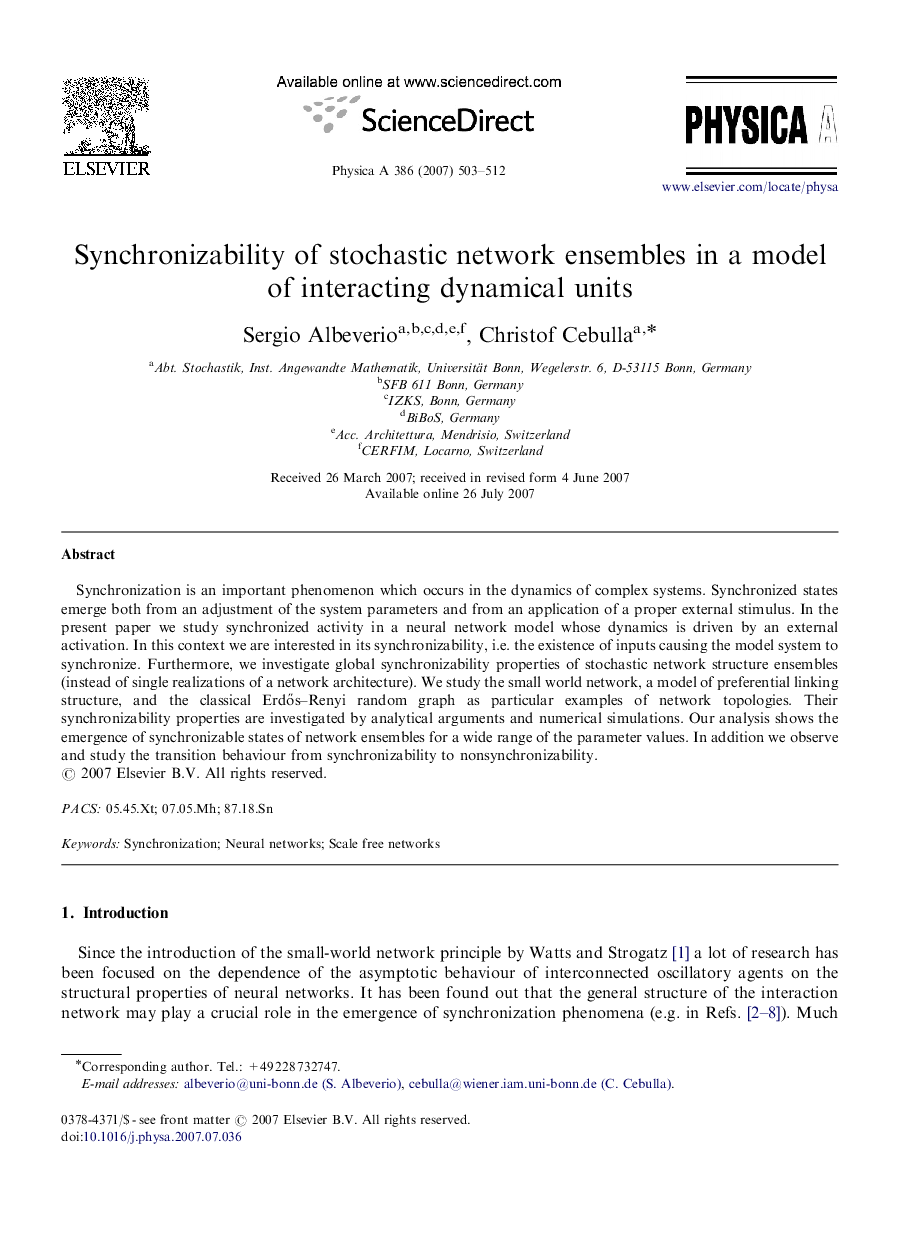| Article ID | Journal | Published Year | Pages | File Type |
|---|---|---|---|---|
| 979523 | Physica A: Statistical Mechanics and its Applications | 2007 | 10 Pages |
Abstract
Synchronization is an important phenomenon which occurs in the dynamics of complex systems. Synchronized states emerge both from an adjustment of the system parameters and from an application of a proper external stimulus. In the present paper we study synchronized activity in a neural network model whose dynamics is driven by an external activation. In this context we are interested in its synchronizability, i.e. the existence of inputs causing the model system to synchronize. Furthermore, we investigate global synchronizability properties of stochastic network structure ensembles (instead of single realizations of a network architecture). We study the small world network, a model of preferential linking structure, and the classical ErdÅs-Renyi random graph as particular examples of network topologies. Their synchronizability properties are investigated by analytical arguments and numerical simulations. Our analysis shows the emergence of synchronizable states of network ensembles for a wide range of the parameter values. In addition we observe and study the transition behaviour from synchronizability to nonsynchronizability.
Related Topics
Physical Sciences and Engineering
Mathematics
Mathematical Physics
Authors
Sergio Albeverio, Christof Cebulla,
